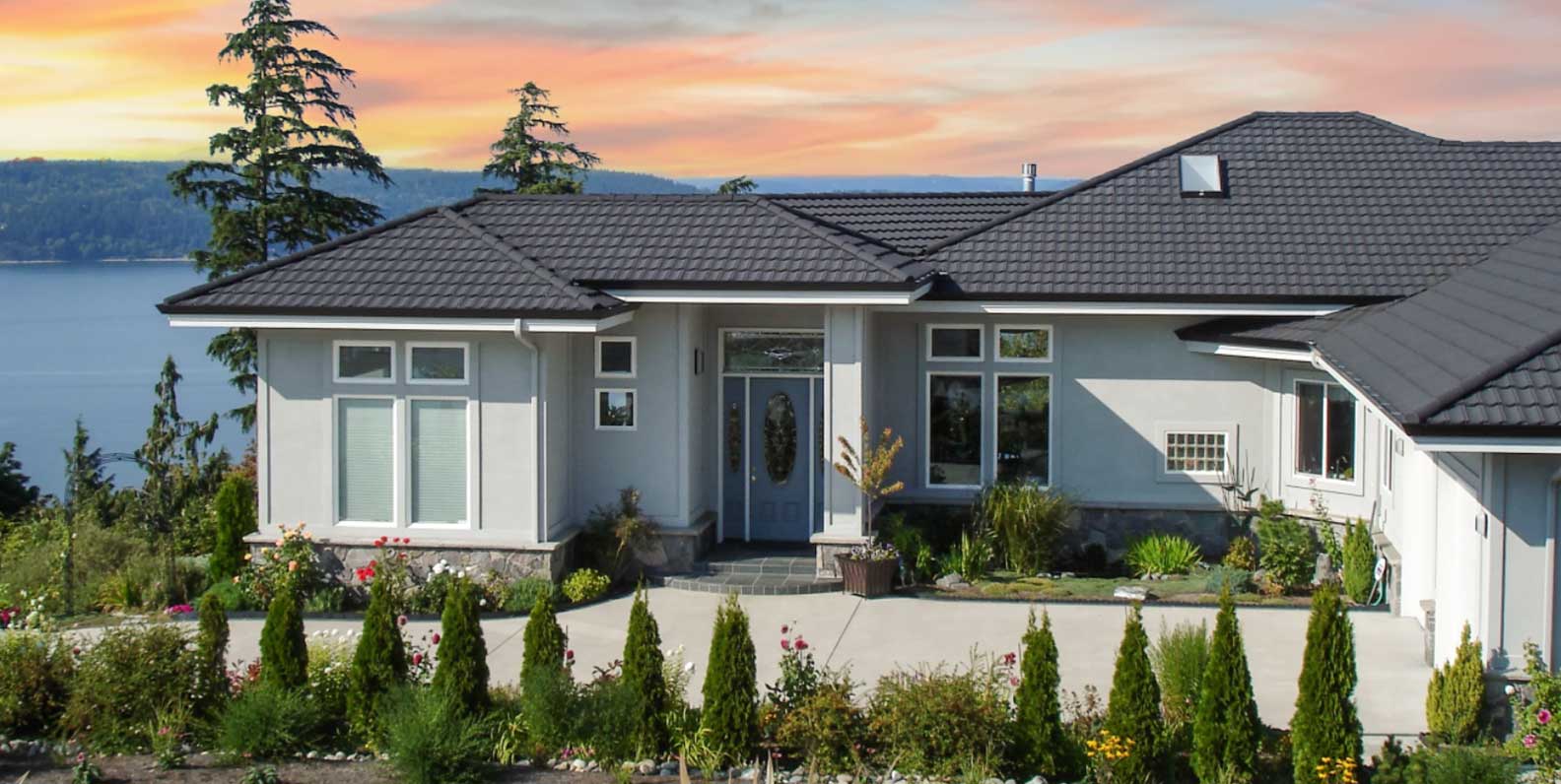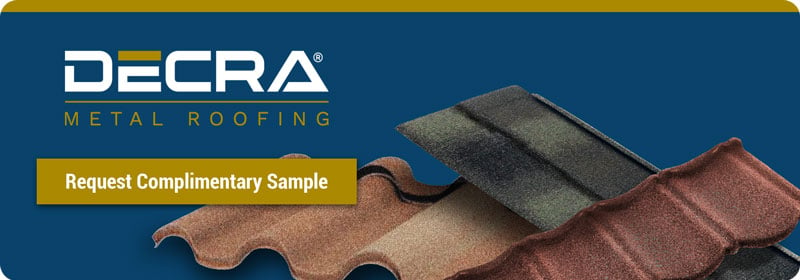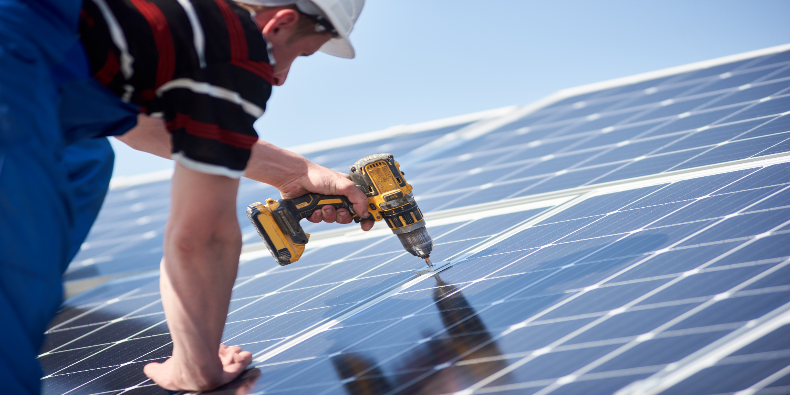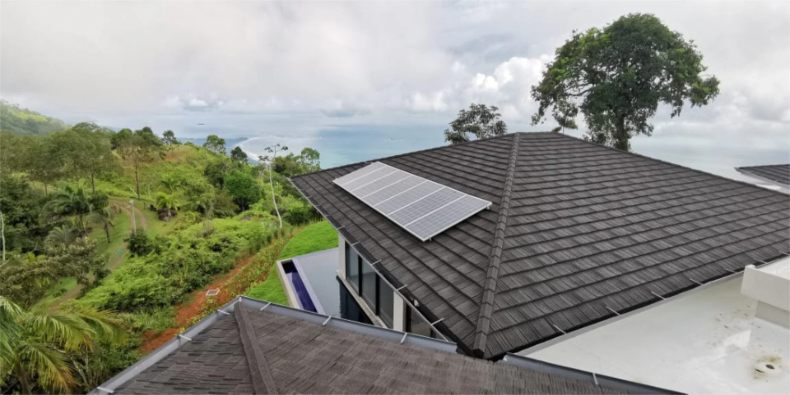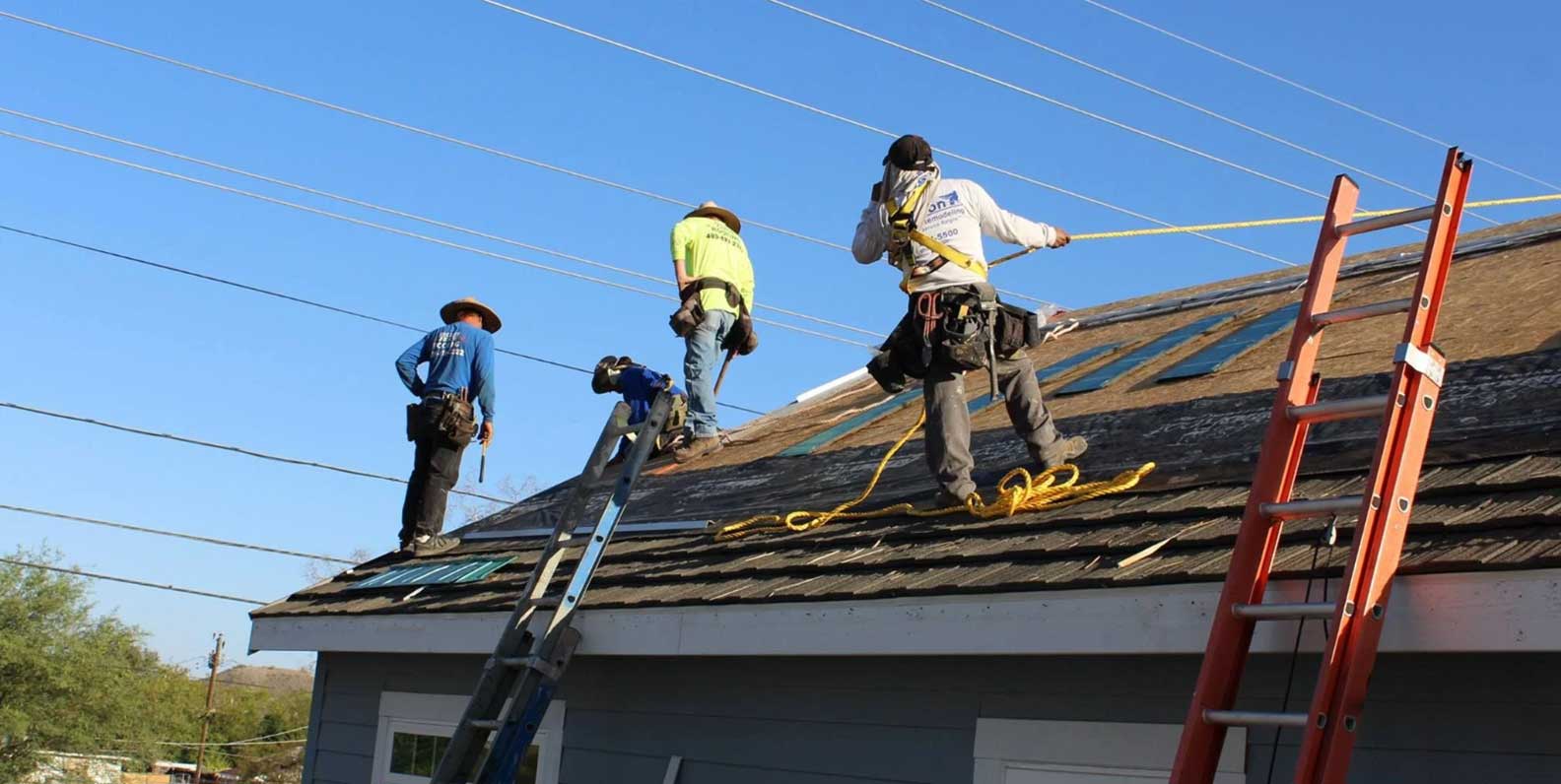If you live along the U.S. coastline, your roof is constantly exposed to everything from salt-ladden air to high winds, heavy rain, and extreme temperature swings. In these regions, many traditional architectural styles favor the classic look of clay tike or shake roofs, which offer beauty, but lack the durability needed to withstand the rigors of coastal weather. The right roofing material can be the difference between costly repairs and long-term peace of mind.
This blog is for coastal homeowners looking to protect their investment. You’ll learn:
- Why coastal homes face unique weather challenges
- How traditional roofing materials perform near the ocean
- Why metal roofing is built to thrive in coastal conditions
Let’s take a closer look at what coastal living means for your roof and how DECRA can help safeguard your home with strength and style.
Common Weather Challenges of Coastal Living
Living near the coast offers beautiful views, beach trips, and ocean breezes. But coastal homes also face extreme weather that demands more from your roof. Here are some of the most common challenges.
Hurricanes
Hurricanes are among the most destructive natural disasters in the U.S. While they primarily affect the Southeast, these powerful storms can occasionally impact areas as far as New England, and in rare cases, affect the West Coast.
In 2024, five major hurricanes formed in the Atlantic, all making landfall in the continental U.S. Scientists attribute the rising frequency and intensity of hurricanes to changing climate patterns.
The financial risk is growing, too. During the 2024 hurricane season, 68% of homeowner insurance claims for property damage in Florida were closed without payment. That means homeowners can’t rely on insurance to rebuild. Instead, their homes need to be resistant to hurricane damage.
Heavy Rain
Whether from hurricanes, Nor’easters, or seasonal coastal storms, heavy rain is a constant threat for seaside homes. And if a roof is aging or has even minor damage, that rain can find its way inside, causing costly problems far beyond the surface.
Water typically seeps through small openings in the roof. This is especially common if the roof has suffered previous storm damage, which can lead to:
- Damaged interior building materials
- Stains on the home’s ceilings
- Rotting wood in the building frame
- Growth of mold and mildew
High Winds
High winds accompanying coastal storms often drive rain beneath vulnerable roofing and strip away key components. It’s the reason light rain might leave your home untouched, while a severe storm results in costly water intrusion.
Strong winds can lift or tear loose shingles, tiles, or shakes, along with other roof elements like flashing and ridge vents. During hurricanes, wind uplift can peel entire sections of the roof away from the home, much like removing the lid of a can.
Hailstorms
If you live near the ocean, you’ve probably experienced hailstorms. Hail often accompanies hurricanes and other severe storms due to temperature differences in the atmosphere.
Hailstones form when warm, moist air collides with cooler upper atmospheric layers, creating ideal conditions for hail. Hail can crack tiles, shatter shakes, and cause divots in shingles, leading to repair costs that can quickly run into the thousands. Some homeowners delay fixing damage to avoid insurance deductibles or premium increases, but this only weakens the roof further, leaving it more exposed during future storms.
Salty and Humid Environment
There’s no doubt that coastal air is invigorating, but for your roof, it’s anything but refreshing. Salt carried in the ocean breeze can accelerate the breakdown of roofing materials over time. It can cause corrosion on components, degrade sealants, and lead to premature aging of shingles, tiles, or other roofing surfaces.
In addition, the high humidity typical of coastal regions creates the perfect environment for mildew, moss, and lichen to grow. These organisms can trap moisture against the roof, further accelerating wear and causing potential damage.
Together, salt and moisture contribute to faster deterioration and increased maintenance needs for roofs near the coast. Homeowners often find themselves investing more time, effort, and money to clean, treat, and preserve their roofs compared to those in drier, inland areas.
Temperature Extremes
Coastal living isn’t always warm and sunny, especially along the Atlantic coast. From the Mid-Atlantic through New England and the Pacific Northwest, seasonal temperature swings can be extreme. Summer highs often reach into the 90s, while winters bring freezing and sometimes sub-zero temperatures.
Snowfall adds significant weight to a roof, but freeze-thaw cycles can be even more damaging. When snow melts and refreezes, it traps water behind built-up ice, forcing it under shingles and into the home. This ice damming can cause damage to the roof, gutters, eaves, and even interior spaces.
Why Traditional Roofing Materials Fail in Coastal Environments
Coastal homes generally rely on one of three traditional roofing materials:
- Clay Tiles: Common in Mediterranean-style homes in Southern California and Florida
- Wood Shakes: Often found on traditional homes in New England and the Pacific Northwest
- Asphalt Shingles: The most widely used roofing material in the U.S.
However, each of these materials faces challenges in coastal environments.
Clay tile is heavy and, in theory, should withstand storms well. But it absorbs water, making it even heavier during wet weather. Without proper structural support, this added weight can cause roof sagging over time. Ceramic tiles are also brittle and prone to cracking on impact. Even walking on the roof after a storm can break tiles, resulting in costly repairs.
Wood shakes are susceptible to cracking and splitting on impact. Unless regularly treated, they absorb moisture, leading to swelling, warping, and decay. This material is particularly vulnerable to plant and fungal growth. In humid coastal climates, homeowners often find themselves scraping moss and other growths off their roofs just to maintain appearance and performance.
Asphalt shingles are popular and cost-effective, especially for new construction. However, they have a shorter lifespan (typically 12 to 20 years) and are especially vulnerable in coastal areas. Strong winds common in coastal storms can lift or rip shingles away, exposing the roof to water damage. Hail can also cause significant impact damage, creating cracks and dents that reduce the shingles’ effectiveness. Over time, shingles lose protective granules, become brittle, and require frequent repairs or replacement.
Fortunately, one roofing material outperforms these traditional options in coastal environments: metal roofing. It lasts two to three times longer and offers protection against the challenges coastal homes face.
DECRA Metal Roofing Stands Up to Coastal Weather
DECRA stone-coated metal roofing gives coastal homeowners a powerful advantage in protecting their properties. Key benefits include:
- Hail Resistance: Rated with the highest UL impact resistance and backed by a warranty for hailstones up to 2.5 inches in diameter.
- Wind Protection: Tested to resist wind-driven rain and warrantied to withstand hurricane-force winds up to 120 miles per hour
- Energy Efficiency: Metal roofs are highly reflective, making them one of the most energy-efficient roofing materials on the market. In fact, a new metal roof can save homeowners up to 40% in energy costs.
- Rust-Resistance: DECRA panels are made from cold-rolled, high-grade carbon steel and coated on both sides with aluminum-zinc using a continuous hot-dip process. This results in a roofing system that resists rust and corrosion, reducing long-term maintenance.
- Non-Porous: Metal roofing is non-porous and impervious to both snow and water, making it ideal for coastal climates.
For homeowners in regions facing both coastal weather and wildfire threats, such as Malibu or Pacific Palisades, DECRA offers the highest possible fire resistance rating for added peace of mind.
Insurance providers have taken notice as well. In areas where policies are under stricter review due to aerial drone inspections, many homeowners with metal roofs qualify for discounts and other policy advantages.
Even better, a metal roof can increase property value by as much as 6%, making it a smart investment whether you’re building long-term equity or preparing to sell.
Request a Complimentary DECRA Sample for Your Coastal Home
DECRA Metal Roofing doesn’t just perform, it enhances your home’s curb appeal, too. Available in a wide array of profiles and colors that replicate the look of shingles, shakes, and tiles. DECRA gives you the beauty you want and the protection you need.
Thinking about upgrading? Request a complimentary sample to see why so many coastal homeowners choose DECRA for both style and strength.
Editor’s Note: This blog was originally published in March, 2021 but has been updated with relevant information.

